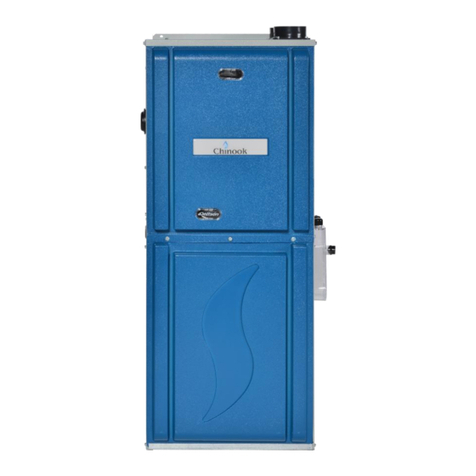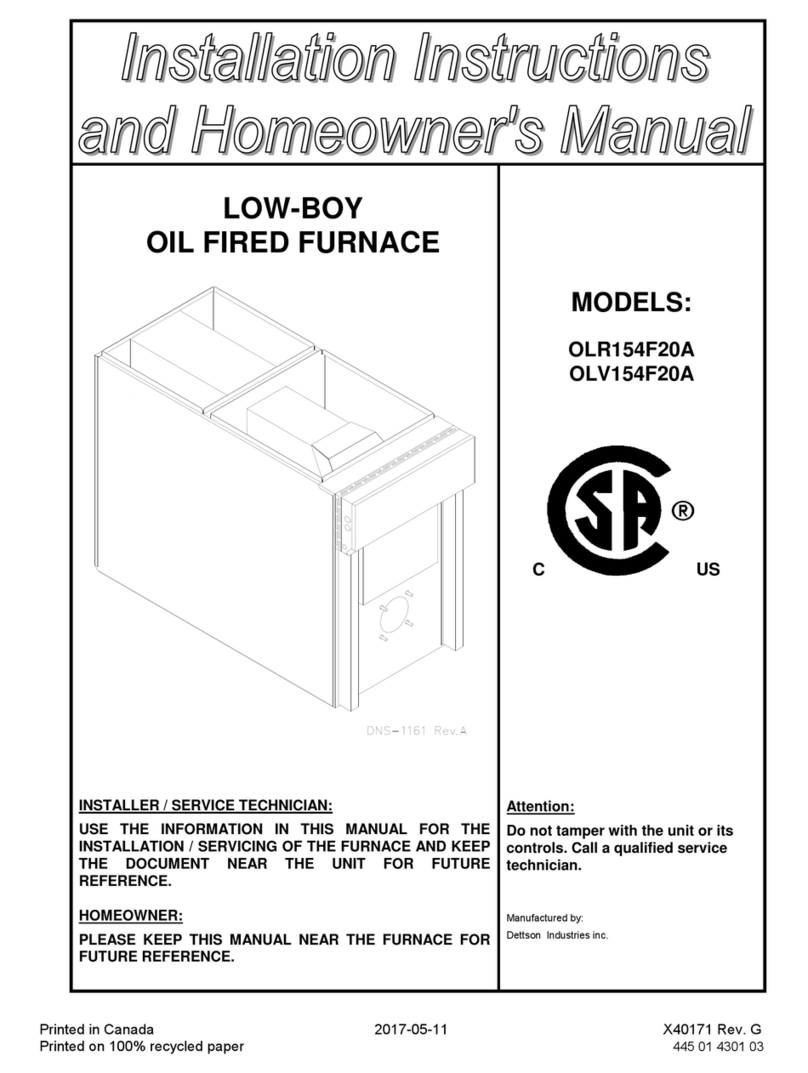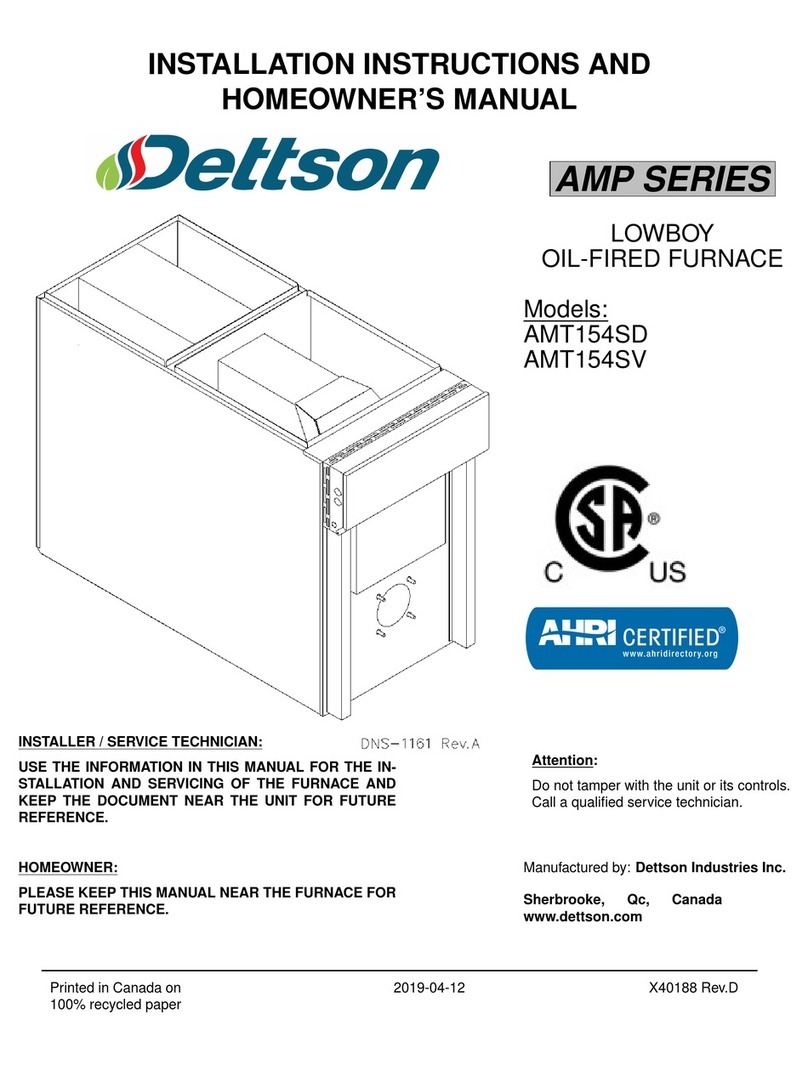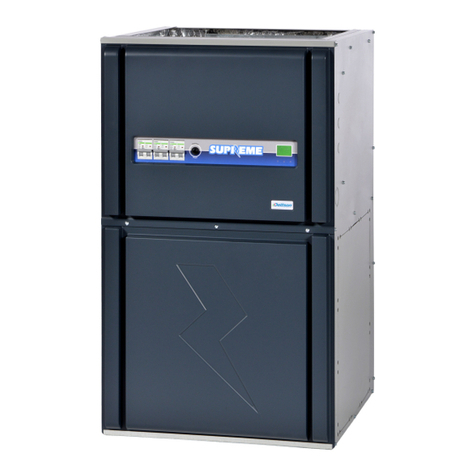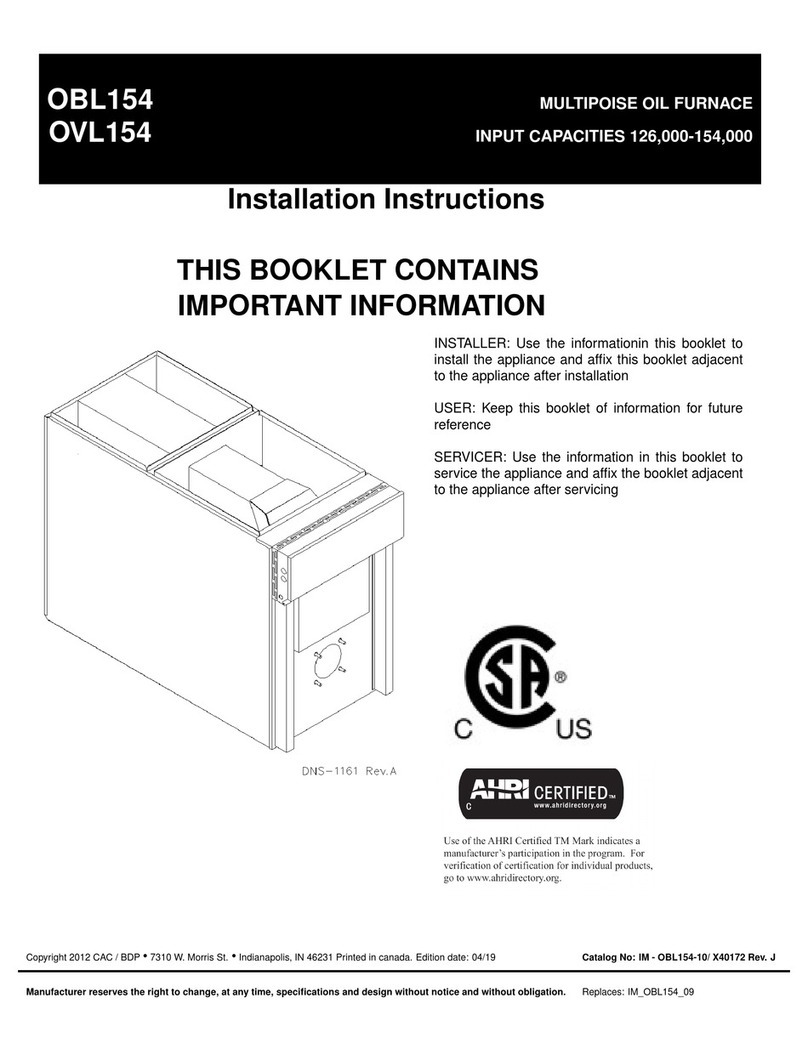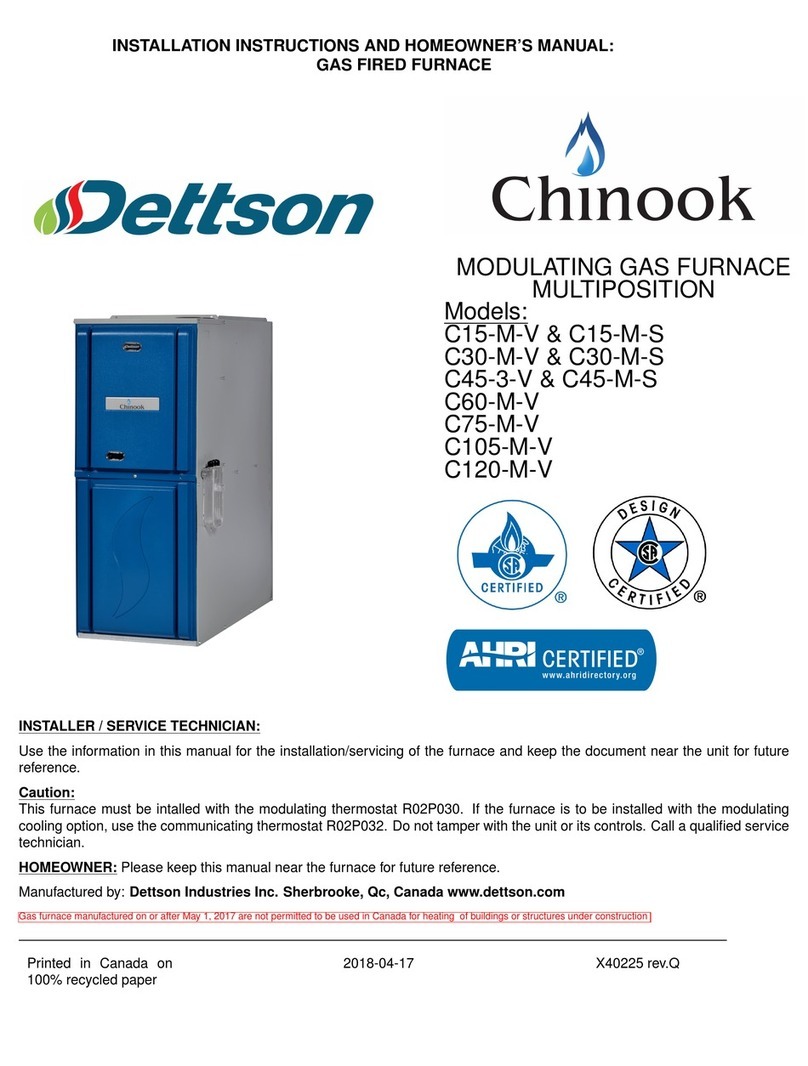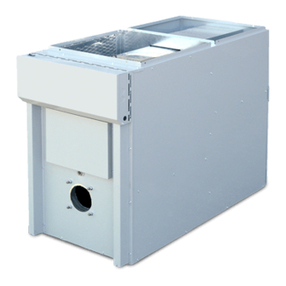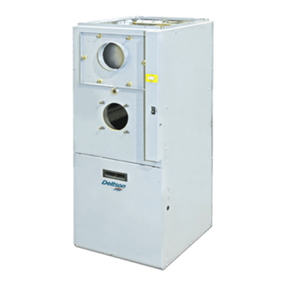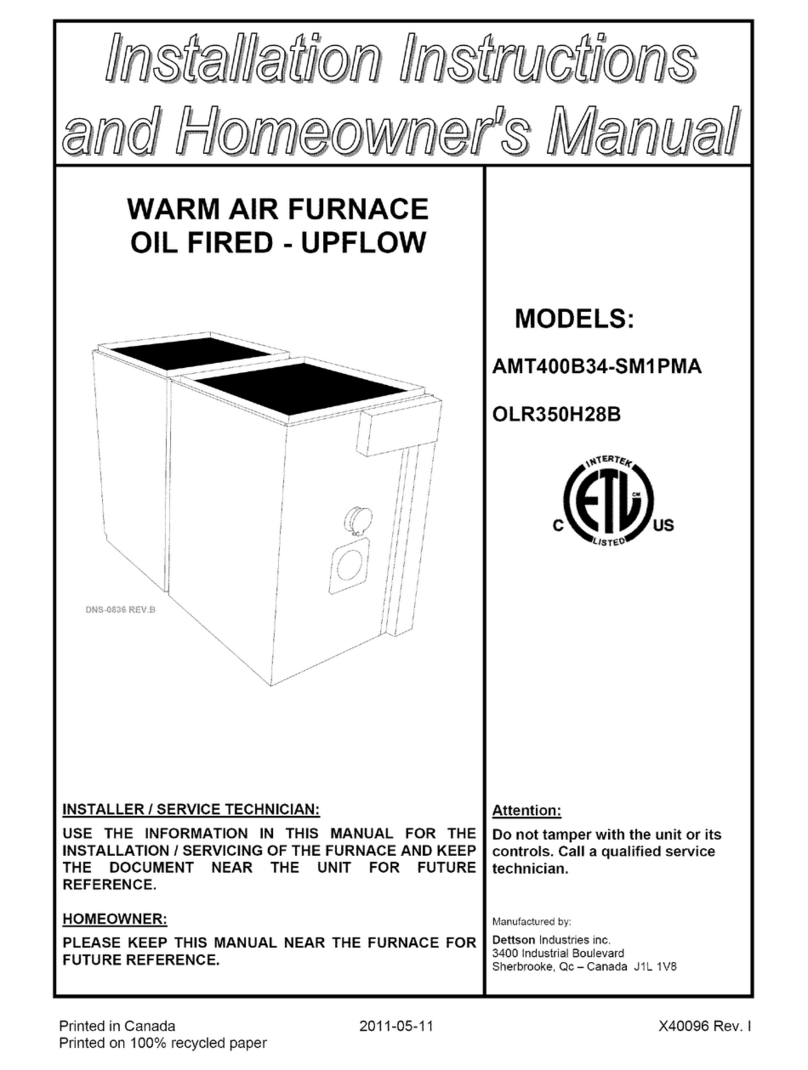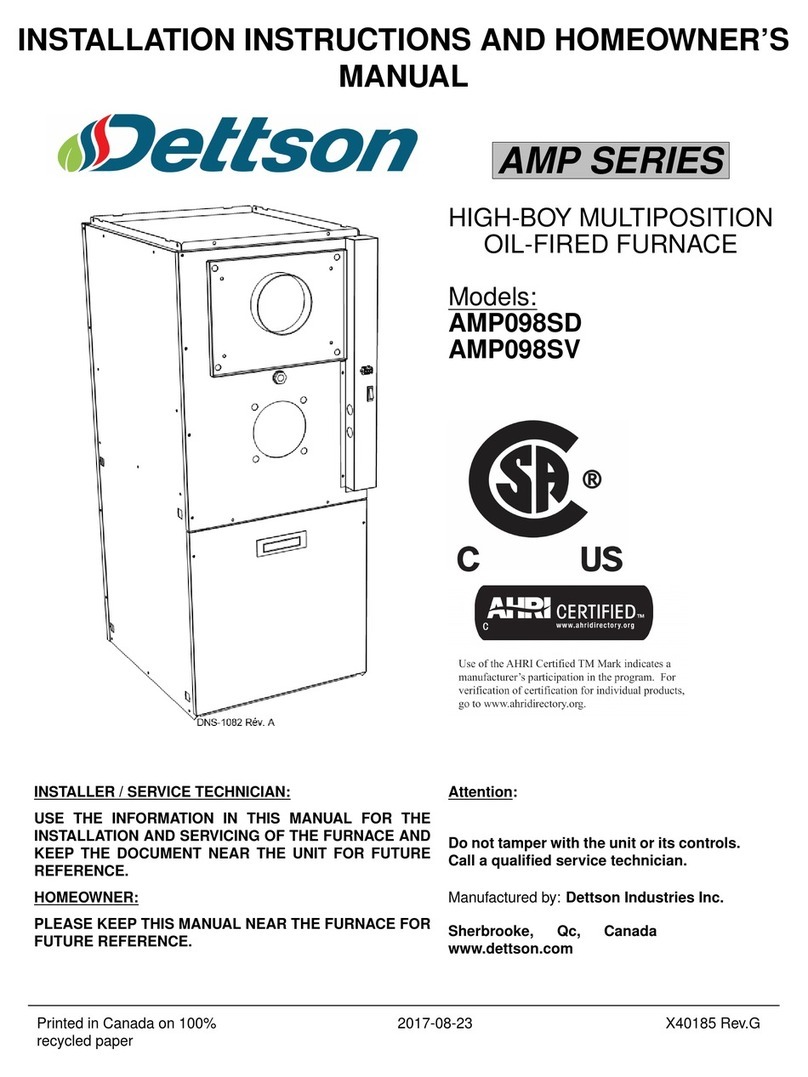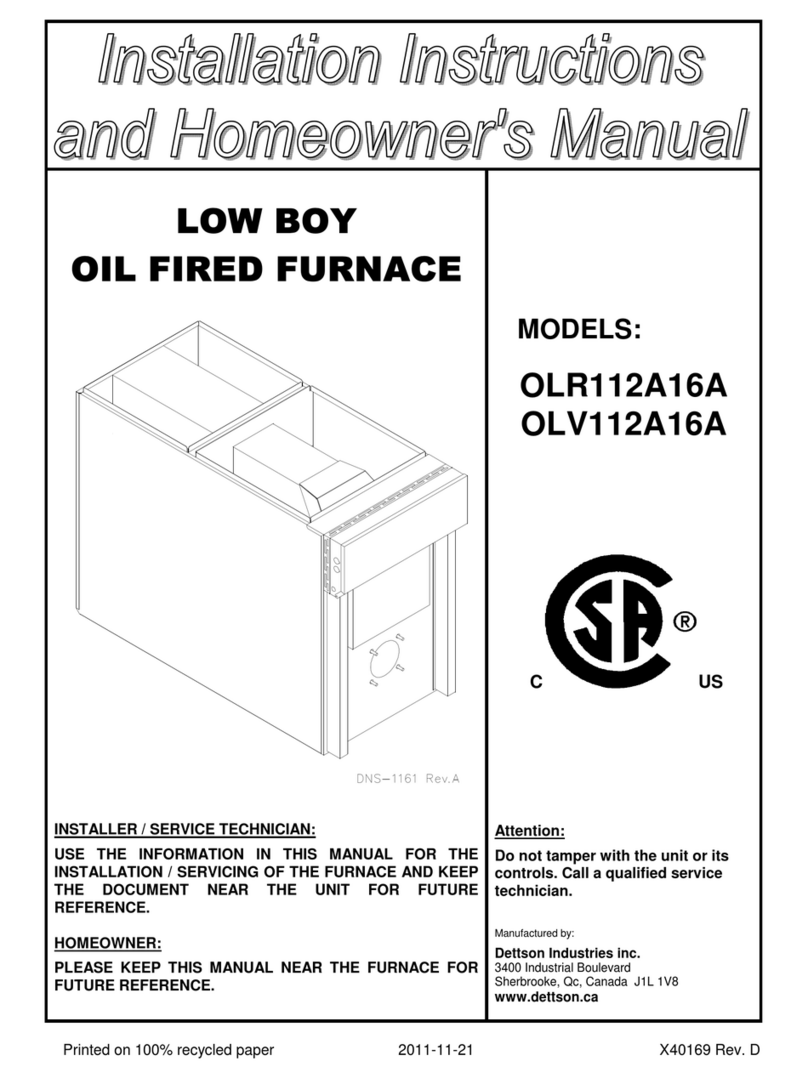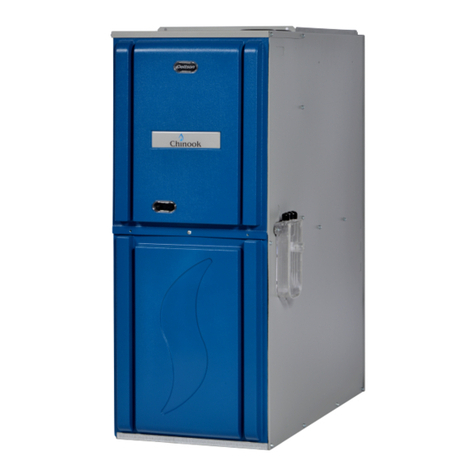
9
CARBON MONOXIDE POISONING HAZARD
Failure to follow the steps outlined below for each appliance connected
to the venting system being placed into operation could result in carbon
monoxide poisoning or death. The following steps shall be followed for
each appliance connected to the venting system being placed into
operation, while all other appliances connected to the venting system
are not in operation:
1.Seal any unused openings in venting system;
2.Inspect the venting system for proper size and horizontal
pitch, as required in the National Fuel Gas Code, NFPA
54/ANSI Z223.1-2009 and these instructions. In Canada, refer
to CAN/CSA-B149.1-2010. Determine that there is no
blockage or restriction, leakage, corrosion and other
deficiencies, which could cause an unsafe condition
3.As far as practical, close all building doors and windows and
all doors between the space in which the appliance(s)
connected to the venting system are located and other spaces
of the building.
4.Close fireplace dampers.
5.Turn on clothes dryers and any appliance not connected to
the venting system. Turn on any exhaust fans, such as range
hoods and bathroom exhausts, so they are operating at
maximum speed. Do not operate a summer exhaust fan.
6.Follow the lighting instructions. Place the appliance being
inspected into operation. Adjust the thermostat so appliance
is operating continuously.
7.Test for spillage from draft hood equipped appliances at the
draft hood relief opening after 5 minutes of main burner
operation. Use the flame of a match or candle.
8.If improper venting is observed during any of the above tests,
the venting system must be corrected in accordance with the
National Fuel Gas Code, NFPA 54/ANSI Z223.1-2009. In
Canada, refer to CAN/ CSA-B149.1-2010.
9.After it has been determined that each appliance connected
to the venting system properly vents when tested as outlined
above, return doors, windows, exhaust fans, fireplace
dampers and any other gas-fired burning appliance to their
previous conditions of use.
Failure to follow the instructions outlined in Locating the Vent
Termination for each appliance being placed into operation could result
in carbon monoxide poisoning or death. For all venting configurations
for this appliance and other gas appliances placed into operation for the
structure, provisions for adequate combustion, ventilation, and dilution
air must be provided in accordance with:
U.S.A. Installations: Section 9.3 NFPA 54/ANSI Z223.1 1−2009, Air for
Combustion and Ventilation and applicable provisions of the local
building codes.
Canadian Installations: Part 8 of CAN/CSA−B149.1−10. Venting
Systems and Air Supply for Appliances and all authorities having
jurisdiction.
2- INTRODUCTION
This 4-way multi-positioning and modulating Category IV condensing
furnace is CSA design certified as a direct vent (2 pipes) or non-direct vent
(1 pipe). The furnace is factory shipped for use with natural gas. The
furnace can be converted in the field for use with propane gas when a
factory supplied conversion kit is used. Refer to the furnace rating plate for
conversion kit information.
This Category IV furnace is approved for installation in
Manufactured/Mobile housing.The furnace must be installed in accordance
with the instruction provided in this manual. A manufactured home
installation must conform with the Manufactured Home Construction and
Safety Standard, Title 24 CFR, Part 3280, or when this Standard is not
applicable, The Standard for Manufactured Home Installations
(Manufactured Home Sites, Communities and Set-Ups), ANSI/NCS
A225.1, and/or MH Series Mobile Homes, CAN/CSA-Z240. Follow all
national and local codes and standards in addition to these
instructions. The installation must comply with regulations of the serving
gas supplier, local building, heating, plumbing, and other codes.
This furnace is designed for minimum continuous return air temperature of
60 °F (16 °C) or intermittent operation down to 55 °F (13 °C) such as when
used with a night setback thermostat. Return air temperature must not
exceed 80 °F (27 °C). Failure to follow these return air temperature limits
may affect reliability of heat exchangers, motors, and controls (Figure 1
Freeze protection and return air temp.).
The furnace should be sized to provide 100 % of the design heating load
requirement plus any margin that occurs because of furnace model size
capacity increments. Heating load estimates can be made using approved
methods available from Air Conditioning Contractors of America (Manual
J); American Society of Heating, Refrigerating, and Air Conditioning
Engineers; or other approved engineering methods. Excessive over sizing
of the furnace could cause the furnace and/or vent to fail prematurely.
2.1- Codes and standards
Figure 1 Freeze protection and return air temp.
Follow all national and local codes and standards in addition to these
instructions. The installation must comply with regulations of the serving
gas supplier, local building, heating, plumbing, and othercodes. In absence
of local codes, the installation must comply with the national codes listed
below and all authorities having jurisdiction. In the United States and
Canada, follow all codes and standards for the following:
2.1.1- Safety
USA: National Fuel Gas Code (NFGC) NFPA 54-2009/ANSI Z223.1-
2009 and the Installation Standards, Warm Air Heating and Air
Conditioning Systems ANSI/NFPA 90B
CANADA: National Standard of Canada, Natural Gas and Propane
Installation Code (NSCNGPIC) CAN/CSA B149.1-2010
2.1.2- General installation
USA: NFGC and the NFPA 90B. For copies, contact the National Fire
Protection Association Inc., Battery march Park, Quincy, MA
02269; or for only the NFGC contact the American Gas
Association, 400 N. Capitol, N.W.,Washington DC 20001
CANADA: NSCNGPIC. For a copy, contact Standard Sales, CSA
International, 178 Rexdale Boulevard, Etobicoke (Toronto),
Ontario, M9W 1R3, Canada




